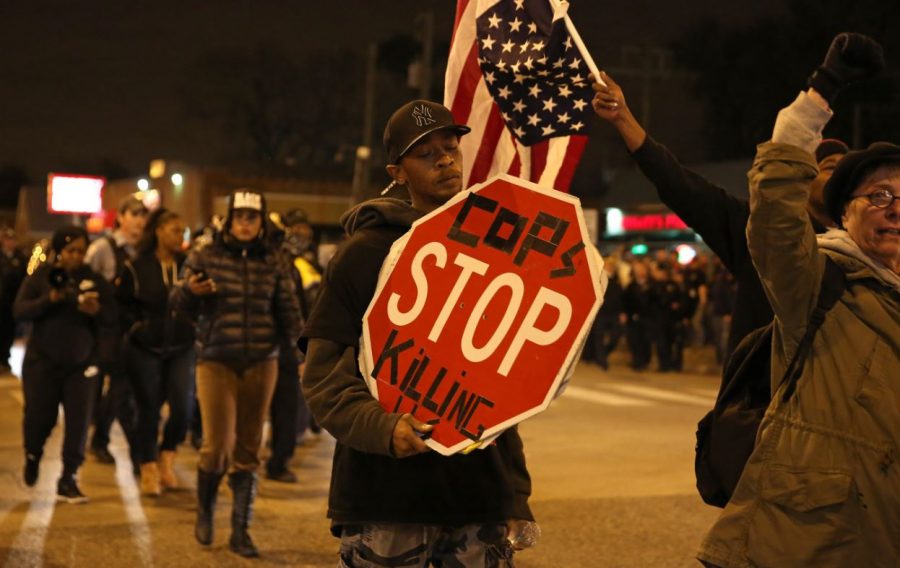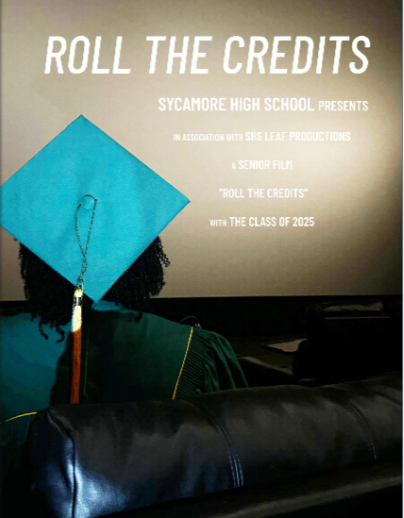Cincinnati ‘Tensing’ after mistrial
Black Lives Matter protests take place outside the courthouse during and following the trial of Sam Tensing. The movement fights for reform and attention to African Americans being killed by police. City leaders are working to keep the situation safe for everyone involved.
November 18, 2016
Cincinnati has recently joined the ranks of cities across the country that have failed to indict police officers recklessly using force with the recent non-conclusion of the Ray Tensing trial.
On July 19, 2015, Sam DuBose, a black man, was pulled over by University of Cincinnati police officer Ray Tensing regarding a missing license plate.
The traffic stop escalated, with Tensing attempting to open the car door, Dubose beginning to drive away, and Tensing firing his gun. DuBose was hit fatally in the head.
Tensing was fired and charged with murder and voluntary manslaughter in a trial that began on Nov. 1, setting the courthouse and its surroundings on edge.
The Black Lives Matter movement in Cincinnati has rallied and protested for conviction multiple times since the incident and continued to protest outside the courthouse throughout the trial.
The ex-officer plead not guilty, claiming that he perceived his life was in danger and felt like he was being dragged when DuBose’s car started moving. However, the prosecution, led by Hamilton County Prosecutor Joe Deters, argued that an eyewitness, forensic evidence, and the body camera footage all indicated that Tensing was not actually dragged.
The prosecution also discussed the racial aspect of the case. It was revealed that Tensing had been wearing a Confederate flag shirt during the shooting, and had the highest proportion of traffic stops of black people out of the UC police force.
Both sides presented expert witnesses giving opposing opinions on whether the use of force was justified in this case.
Ultimately, after 25 hours of deliberation, the jury was unable to reach a unanimous decision and Judge Megan Shanahan declared it a mistrial.
“In this case, no one got the justice they thought they deserved and fought for. It was such a waste of time, money, and energy… only to have no result. By not coming to a conclusion, the justice system served both parties an injustice,” said Emma Traylor, 12.
Deters has until Nov. 28 to decide whether they will redo the trial with a new jury, alter the charges, reach a plea deal, or drop the case altogether. Protests have continued following the decision.
According to “ABC News,” “I think the prosecutor has to take some action and can’t just walk away from it. [Deters] had good evidence and a good credible case,” said Mike Allen, former Hamilton County Prosecutor.
Honestly, I was incredibly disappointed with the jury when it failed to indict Tensing. I was not necessarily surprised, juries often trust and side with police officers, and instances of white officers not being held responsible for their crimes against black men have in large part spurred the Black Lives Matter movement.
In fact, there have been instances in which I agreed that the involved officers were not at fault.
Last year’s Ohio mock trial case consisted of a hypothetical, fairly similar police shooting in which an officer shot at what he/she perceived to be a criminal with a weapon. It turned out to be a fake weapon, similar to the Tamir Rice case of 2014.
“In this case, I believe there was no threat of bodily harm. Attempting to run away does not mean you’re threatening to inflict serious injury,” said Adam Meller, 11.
The law holds that such cases must consider the officer’s perspective in the heat of the moment, not just with 20/20 hindsight. It is entirely reasonable for officers to act when they legitimately feel that they have no other choice to prevent the endangerment of their lives or the lives of others.
The Supreme Court held that officers are not to utilize deadly force on fleeing suspects unless they have probable cause to believe that the suspect will proceed to endanger others. But in this instance, all of the evidence pointed to the reality that DuBose was not a threat; he was fleeing. Tensing had no reason to perceive him as dangerous at a routine traffic stop. He shot anyway.
As for whether Tensing was dragged by the vehicle, photos from right after the incident showed an unscathed Tensing with a mere scratch to carry away-as opposed to a murdered DuBose. A video analyst testified that the body camera footage did not show the defendant being dragged. A forensics expert testified that Tensing’s shoe was not dragged. An eyewitness testified that he was not dragged. Apparently, none of this was enough.
The defense’s strongest argument was that one must consider the perspective of the officer, and I wholeheartedly agree that an officer must be able to protect themselves on the job. But I do maintain that the story of a man being charged with murder is far more easily fabricated than physical evidence. Plus, only one of the parties directly involved is here to tell his story to a jury.
Speaking of the jury-this trial was decided by ten white and two black jurors. I do not always like to “play the race card,” but maybe the reason that a jury carefully picked to be unbiased was so unbalanced was that it is a lot easier for a white person to be moderate regarding race relations.
I do not doubt that these jurors attempted to be objective, but bias, conscious or not, is legitimate.
And there is no getting around the race relations here-not in a case where a black man was killed by someone wearing a shirt with a Confederate flag. Tensing said the shirt was a gift, that he was unattached to it. My response is that one does not where a controversial symbol unless they feel something about it, and that arrest proportion does not seem likely to be a coincidence.
This was not a shock, but I feel it should have been obvious. As brave and necessary police officers are, they are not all infallible. I sincerely hope we will see Tensing brought to justice.







